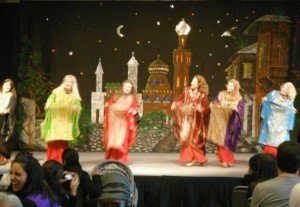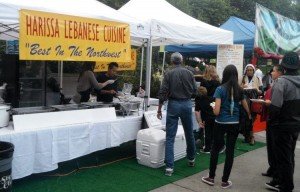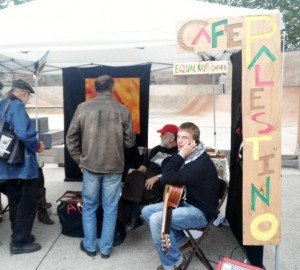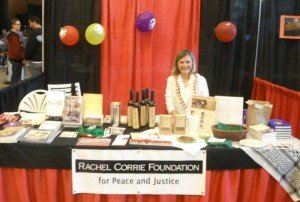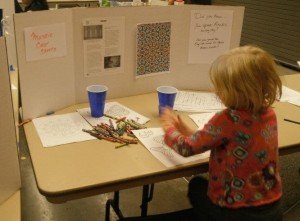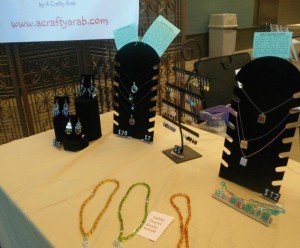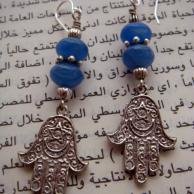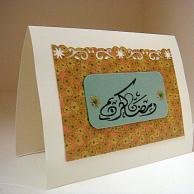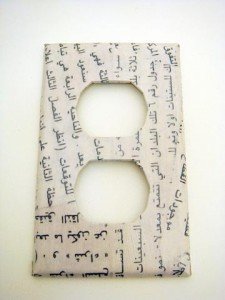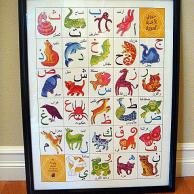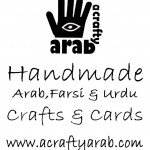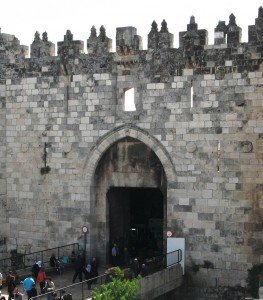Seattle Arab Festival 2011 ~ Photos by A Crafty Arab
The Seattle Arab Festival took place in early October at the Seattle Center. I was unable to attend, but I’m sharing photos from the event, thanks to Koloud ‘Kay’ Tarapolsi, who attended as a vendor, blog photographer and member of the Seattle Arab community.
Koloud is a Libyan American who developed her brand A Crafty Arab to promote a positive image of Arab culture by creating jewelry, crafts, and handmade educational tools that are fun and colorful. She sells her items online, at local stores in the Pacific Northwest and at festivals such as the Seattle Arab Festival. (To find out more about A Crafty Arab, keep reading.)
Here are a few of Koloud’s photos from the Seattle Arab Festival 2011.
First is Koloud selling her crafts. 
The performance stage (below). So sad I missed this!
A Morocan-themed booth
A few of the food booths
Cafe Palestine
Booth with educational resources from AmidEast
Booth for the Rachel Corrie Foundation for Peace & Justice … A topic close to my heart.
One of the booths for kids. Yay!
Finally, a glimpse of the jewelry from A Crafty Arab.
More about A Crafty Arab
Kholoud created the brand A Crafty Arab in 2008 to strengthen Arab American heritage and language. She sells her handmade Arabic crafts and cards at A Crafty Arab. Below are a few examples of her crafts.
Blue Hamsa Earrings ~ Hand of Fatima
Um Kulthuum pin (!!)
Arabic “Ramadan Kareem” greeting card
Arabic-themed light switch cover. So crafty!
Poster featuring the Arabic alphabet. A must-have for young Arabic-speaking kids.
More about Koloud ‘Kay’ Tarapolsi
Koloud left Libya with her family when she was 7 years old. Shortly afterwards, her parents were granted political asylum and allowed to live in the US. She grew up in Oklahoma, but moved to Seattle in 1992 after a friend sent her a postcard of Mt. Rainer. She started making handmade Arabic greeting cards when she couldn’t find any to give to friends. Soon she was getting requests and now also makes Farsi and Urdu cards. Trying to stay unique, she started adding humor to her cards and crafts. Koloud lives in Redmond, Washington, with her husband, 3 young daughters and a cat named Shems (Arabic for sunshine). Here is a 4-minute video of a TV show featuring Koloud. (It’s mostly in Arabic, but easy to get get the gist.)
Kholoud has A Crafty Arab Blog. You can also find A Crafty Arab on Facebook. In the Seattle area, you can find Koloud’s crafts at: Seattle Public Library Friend Shop (Downtown Seattle), Ventures (Pike Place Market), Al-Andalus (Greenwood), and Happy Delusions (Renton).
Enjoy!
